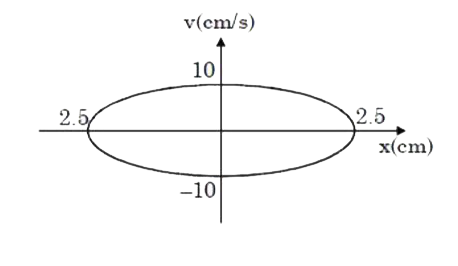The velocity in SHM is ………………….. with acceleration, when particle is moving from extreme position to mean position.
To solve the question regarding the relationship between velocity and acceleration in Simple Harmonic Motion (SHM) when a particle is moving from the extreme position to the mean position, we can follow these steps:
1. Understanding SHM:
- In SHM, a particle oscillates about a mean position. The maximum displacement from the mean position is called the amplitude (A). The particle moves back and forth between two extreme positions.
2. Position Equation:
- The position of the particle in SHM can be described by the equation:
x(t)=Acos(ωt)
where ω is the angular frequency and t is the time.
3. Finding Velocity:
- To find the velocity of the particle, we differentiate the position function with respect to time:
v(t)=dxdt=−Aωsin(ωt)
4. Finding Acceleration:
- Similarly, to find the acceleration, we differentiate the velocity function with respect to time:
a(t)=dvdt=−Aω2cos(ωt)
5. Analyzing the Relationship:
- From the equations of velocity and acceleration, we can observe:
- Velocity v(t)=−Aωsin(ωt)
- Acceleration a(t)=−Aω2cos(ωt)
- When the particle is moving from the extreme position to the mean position, the value of sin(ωt) is increasing from 0 to 1, while cos(ωt) is decreasing from 1 to 0.
6. Conclusion:
- As the particle moves from the extreme position to the mean position, the velocity is positive (moving towards the mean position) and the acceleration is negative (acting towards the mean position). However, both velocity and acceleration are in phase in terms of their direction of influence on the motion. Therefore, we conclude that:
- The velocity in SHM is in phase with acceleration when the particle is moving from the extreme position to the mean position.
Final Answer:
The velocity in SHM is in phase with acceleration when the particle is moving from extreme position to mean position.
- In SHM, a particle oscillates about a mean position. The maximum displacement from the mean position is called the amplitude (A). The particle moves back and forth between two extreme positions.
- The position of the particle in SHM can be described by the equation:
x(t)=Acos(ωt)
where ω is the angular frequency and t is the time.
- To find the velocity of the particle, we differentiate the position function with respect to time:
v(t)=dxdt=−Aωsin(ωt)
- Similarly, to find the acceleration, we differentiate the velocity function with respect to time:
a(t)=dvdt=−Aω2cos(ωt)
- From the equations of velocity and acceleration, we can observe:
- Velocity v(t)=−Aωsin(ωt)
- Acceleration a(t)=−Aω2cos(ωt)
- When the particle is moving from the extreme position to the mean position, the value of sin(ωt) is increasing from 0 to 1, while cos(ωt) is decreasing from 1 to 0.
- As the particle moves from the extreme position to the mean position, the velocity is positive (moving towards the mean position) and the acceleration is negative (acting towards the mean position). However, both velocity and acceleration are in phase in terms of their direction of influence on the motion. Therefore, we conclude that:
- The velocity in SHM is in phase with acceleration when the particle is moving from the extreme position to the mean position.
The velocity in SHM is in phase with acceleration when the particle is moving from extreme position to mean position.
Topper's Solved these Questions
- OSCILLATIONS AND WAVESBOOK - PRADEEPCHAPTER - OSCILLATIONS AND WAVESEXERCISE - PROBLEMS FOR PRACTICE
149 Videos
- OSCILLATIONS AND WAVESBOOK - PRADEEPCHAPTER - OSCILLATIONS AND WAVESEXERCISE - Multiple Choice Question-I
21 Videos
- OSCILLATIONS AND WAVESBOOK - PRADEEPCHAPTER - OSCILLATIONS AND WAVESEXERCISE - Multiple Choice Question
20 Videos
- MATHEMATICAL TOOLSBOOK - PRADEEPCHAPTER - MATHEMATICAL TOOLSEXERCISE - Fill in the blanks
5 Videos
- PHYSICAL WORLD AND MEASUREMENTBOOK - PRADEEPCHAPTER - PHYSICAL WORLD AND MEASUREMENTEXERCISE - Competiton Focus Jee Medical Entrance
18 Videos
Similar Questions
Knowledge Check
Particle moves from extreme position to mean position, its
Akinetic energy increases, potential energy decreasesBkinetic energy decreases, potential increasesCboth remains constantDpotential energy becomes zero and kinetic energy remains contantThe acceleration of a particle performing S.H.M. at extreme position is
AminimumBconstantCmaximumDin between maximum and minimumThe acceleration of a particle performing S.H.M. at mean position is
Aminimum or zeroBconstantCmaximumDhalf of the maximum
When a particle executing a linear S.H.M. moves from its extreme position to the mean position, its
View SolutionWhat is the acceleration of a particle executing S.H.M. at its mean position.?
View SolutionA particle performing S.H.M., its velocity when the particle moves from mean to extreme position is
View SolutionThe velocity of a particle performing S.H.M. at extreme position is
View SolutionAcceleration of a particle, executing SHM, at it’s mean position is
View Solution

